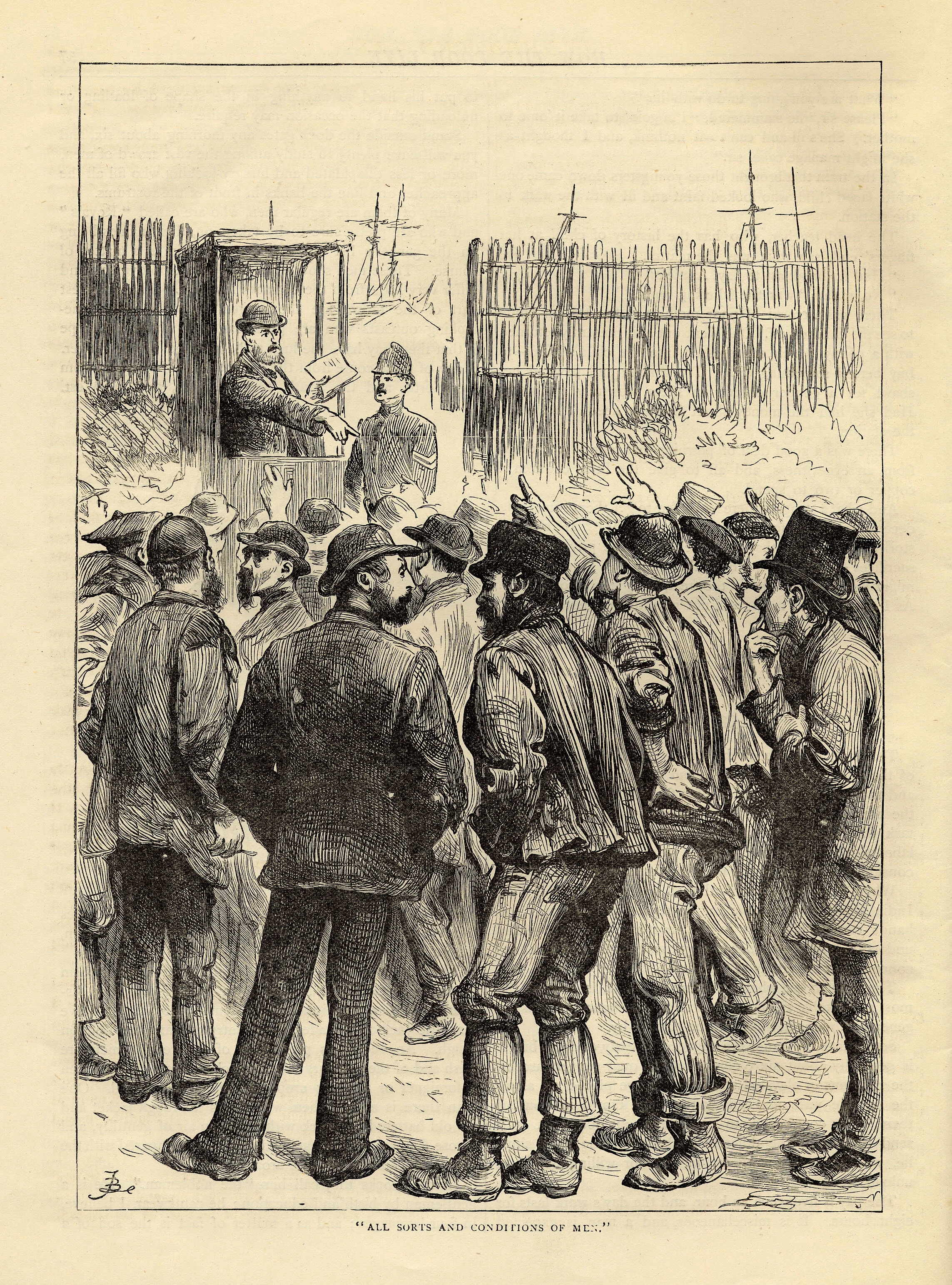London’s Blackest Streets: Sarah Wise (1889)
For this insightful and evocative episode of Travels Through Time, Peter Moore heads to the historian Sarah Wise’s flat in central London, to talk about left wing politics, life and labour in the imperial capital in the year 1889.
London in 1889 lay at the heart of the most extensive empire the world had ever seen. This was the year that the luxurious Savoy Hotel opened and the ornate Tower Bridge was under construction. But though there was fabulous and ostentatious wealth in many areas of the capital, it was unequally distributed. Many were worried that those who lived and worked in the East End and docklands were being pushed increasingly into chronic poverty and further towards revolution.
Among those to be concerned were the businessman turned social reformer, Charles Booth. Following a series of breakdowns, in the 1880s Booth began his series of social investigations into the East End which would result in his pioneering series of colour-coded poverty maps. He found that 35% of Londoners were living in poverty, but that in the East End this proportion grew to as much as 80%.
“It was an era in which there were lots of secrets and lots of mystery and lots of drama.”
As Booth trod the East End streets, assigning each one a social status, other reformers were at work. In one of the most deprived parishes in the country, the Reverend Arthur Osborne Jay re-modelled his Holy Trinity Church so it included a boxing ring and a music hall platform, so there was a positive outlet for the energies of his congregation.
Fancy a stroll through East #London in 1889? On the Travels Through Time free podcast we’ll be walking through street markets, experiencing the stillness on the #Thames during the Dock Strike, and watching a boxing match in a #Shoreditch church. https://t.co/GoUJgOZPv2 pic.twitter.com/aviJjWJPxM
— Sarah Wise (@MissSarahWise) February 11, 2020
For the last twenty five years the award-winning social historian Sarah Wise has been researching histories like these. Inspired by passionate, thoughtful leftish politicians like Henry Hyndman and William Morris, in this episode of Travels Through Time Sarah guides us into the turbulent East End streets in search of ‘moralised capitalism.’
The nineteenth-century, Wise says, ‘was an era in which there were lots of secrets and lots of mystery and lots of drama.’ Here she takes us to meet figures like Booth and Rev. Jay, who were trying to make sense of the riddles, as well as showing us how close the country came to complete social breakdown.
***
Click here to order Sarah Wise’s book from John Sandoe’s who, we are delighted to say, are supplying books for the podcast.
The first ever one-volume edition of Charles Booth’s London Poverty Maps has recently been published by Thames & Hudson
Listen to the podcast here
Show notes:
Scene One: Charles Booth walking around the market of Slater Street, Club Row and Brick Lane, one Sunday morning in 1889.
Scene Two: 14 August 1889, Wapping and Limehouse, by the River Thames
Scene Three: 25 February, 1889, a boxing match at Reverend Jay’s Holy Trinity Church, Bethnal Green.
Memento: The entire Charles Booth Map of London
People/Social
Presenter: John Hillman
Interview: Peter Moore
Guest: Sarah Wise
Producers: Maria Nolan
Titles: Jon O
What you will learn in this episode
Living conditions in London in the 1880s
Early left-wing politics and solidarity movements
The social geography of London
The Great Dock Strike of 1889
Biographical backgrounds of Charles Booth and Reverend Arthur Osborne Jay
How the Church of England started to involve itself in social policy initiatives
Listen on YouTube
Map of Victorian London
Source: Library of Congress
Images
Some of the people/scenes discussed in our conversation
Explore more from the LSE. Charles Booth’s London: Poverty Maps & Police Notebooks
Complementary episodes
Cursed Britain: Dr Thomas Waters (1862)
Witches, spells, black magic and shape-shifting combine in unsettling ways in this Halloween episode of Travels Through Time.
The year 1862 in Britain was characterised by innovation and dynamism. In London a pioneering engineering […]
Victory in the Kitchen: Dr Annie Gray (1940*)
In this fascinating episode of Travels Through Time, the ‘queen of food historians’ Dr Annie Gray takes us inside Number Ten Downing Street, as the bombs fell in 1940, to meet Winston Churchill’s magnificent cook: Georgina Landemare. We know so much about Churchill’s life during that fateful year, 1940.












